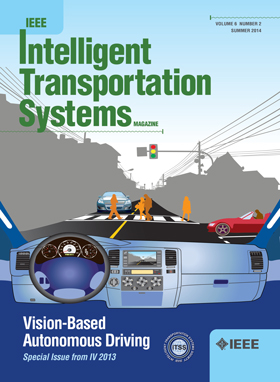Dynamic Spatio-Temporal Planning Strategy of EV Charging Stations and DGs Using GCNN-Based Predicted Power Demand
IF 7.9
1区 工程技术
Q1 ENGINEERING, CIVIL
IEEE Transactions on Intelligent Transportation Systems
Pub Date : 2025-02-25
DOI:10.1109/TITS.2025.3541190
引用次数: 0
Abstract
As a sustainable participant in the modernization of transportation systems, electric vehicles (EVs) call for a well-planned charging infrastructure. To meet the ever-increasing charging demands of EVs, an efficient dynamic spatio-temporal allocation strategy of charging stations (CSs) is necessary. With newly allocated CSs, additional distributed generators (DGs) are required to compensate for the load increase. Given a budget to be allocated over a certain time horizon, we formulate the joint spatio-temporal CSs and DGs planning problem as a multi-objective optimization problem. During each planning period, the allocation strategy aims at minimizing the total power generation costs and CSs/DGs installation costs while satisfying budgetary and power constraints and ensuring a minimum level for the charging requests satisfaction rate. In this regard, we first predict the future power demand of EVs using a graph convolutional neural network (GCNN). Then, using the power demand forecast, we obtain the optimal number and locations of CSs and DGs at each time stage using reinforcement learning. A case study of the proposed allocation strategy over 6 time stages for the 2000-bus power grid of Texas coupled with 720 initially existing CSs is presented to illustrate the performance of the planning strategy.基于gcnn的电动汽车充电站和dg动态时空规划策略
作为交通系统现代化的可持续参与者,电动汽车(ev)需要一个精心规划的充电基础设施。为了满足日益增长的电动汽车充电需求,需要一种高效的充电站动态时空配置策略。对于新分配的CSs,需要额外的分布式发电机(dg)来补偿负载的增加。在给定一定时间范围内的预算分配情况下,我们将CSs和dg的时空联合规划问题表述为一个多目标优化问题。在每个规划期内,分配策略的目标是在满足预算和功率约束的情况下,使总发电成本和CSs/ dg安装成本最小化,并保证充电请求满意率保持在最低水平。为此,本文首先利用图形卷积神经网络(GCNN)对电动汽车的未来电力需求进行预测。然后,利用电力需求预测,通过强化学习得到各时间阶段最优的CSs和dg数量和位置。本文以得克萨斯州2000总线电网和720个初始存在的CSs为例,对所提出的分配策略进行了6个时间阶段的研究,以说明规划策略的性能。
本文章由计算机程序翻译,如有差异,请以英文原文为准。
求助全文
约1分钟内获得全文
求助全文
来源期刊

IEEE Transactions on Intelligent Transportation Systems
工程技术-工程:电子与电气
CiteScore
14.80
自引率
12.90%
发文量
1872
审稿时长
7.5 months
期刊介绍:
The theoretical, experimental and operational aspects of electrical and electronics engineering and information technologies as applied to Intelligent Transportation Systems (ITS). Intelligent Transportation Systems are defined as those systems utilizing synergistic technologies and systems engineering concepts to develop and improve transportation systems of all kinds. The scope of this interdisciplinary activity includes the promotion, consolidation and coordination of ITS technical activities among IEEE entities, and providing a focus for cooperative activities, both internally and externally.
 求助内容:
求助内容: 应助结果提醒方式:
应助结果提醒方式:


